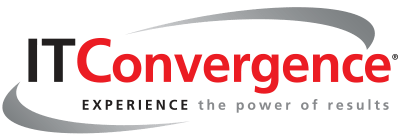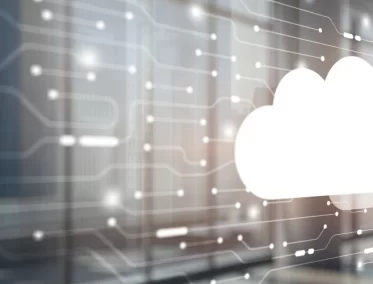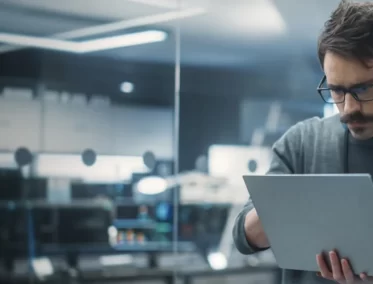For years, JD Edwards has been labeled as legacy, outdated, or in need of replacement. But the truth is, most of the friction organizations feel with their ERP isn’t coming from JD Edwards itself…it’s coming from the infrastructure it runs on.
If your business is still running JD Edwards EnterpriseOne or World on IBM i (AS/400), you’re not alone. But staying on iSeries is increasingly problematic. It’s aging, expensive to maintain, and misaligned with the demands of a modern, cloud-first strategy.
The danger isn’t just technical debt, it’s operational fragility. Organizations that ignore the growing risks of iSeries face surging support renewals, mounting talent gaps, and missed opportunities for modernization.
Before you write off JD Edwards, it’s worth asking: is it the ERP that’s slowing you down…or the platform it’s on?
The Reality of JD Edwards in 2025
JD Edwards remains critical for thousands of companies worldwide. According to market data:
- Nearly 7,000 companies continue to use JD Edwards globally.
- Around 86% of these users have upgraded to EnterpriseOne 9.2, which Oracle supports through at least 2035.
Far from being obsolete, JDE is modernizing. Instead, it’s the underlying infrastructure that’s increasingly misaligned with today’s business needs.
Continued JDE Value
- Actively supported by Oracle with ongoing feature updates and roadmap planning.
- Adopted across mid‑sized to enterprise segments.
- Trusted by mission-critical industries (manufacturing, distribution, food & beverage, and more) that rely on its extensive capabilities.
iSeries Is Quietly Failing Your JDE
Key Takeaways:
You can keep JDE. Many customers still operate world-class ERP environments on 9.2. But if that foundation relies on aging infrastructure and shrinking talent pools, you’re facing growing cost, risk, and stagnation. That’s why modernization efforts are accelerating, not because JDE fails, but because iSeries is holding it back. |
It’s easy to overlook the infrastructure powering JD Edwards, especially when the ERP appears to be functioning normally. But under the surface, iSeries is quietly becoming a liability. Not because it’s broken today, but because it’s increasingly unsupported, unscalable, and unaligned with modern enterprise needs.
Hardware is aging faster than it can be replaced: the average iSeries environment in production today is 7–10 years old. Hardware refreshes are costly and difficult to source. Worse, many organizations run critical workloads on systems without full redundancy or disaster recovery, often because replacements are either unavailable or too expensive.
Talent is retiring…fast: a 2023 study found that over 50% of IBM i organizations report difficulty hiring RPG developers, and 1 in 4 anticipate a “critical shortage” of skills in the next 3 years.
Even if you can maintain your system today, will you be able to tomorrow?
Support and licensing costs are escalating: aging systems come with rising maintenance contracts, patching workarounds, and consulting fees to bridge talent gaps. When added up, the total cost of ownership (TCO) for maintaining iSeries often exceeds that of replatforming to cloud—without any of the innovation benefits.
Innovation, integration, and security are blocked:
iSeries systems:
- Struggle with real-time reporting, analytics, and IoT integrations
- Require manual patching and offer limited compatibility with modern cybersecurity protocols
As JD Edwards evolves to support AI, automation, and connected operations, iSeries simply can’t keep up.
What Modernization Actually Looks Like
Modernizing JD Edwards doesn’t mean starting over. You don’t need to rip out decades of custom logic, retrain your users, or risk operational disruption. In fact, the most strategic path forward for iSeries-based JDE users is not ERP replacement. It’s infrastructure replatforming.
Replatforming JD Edwards from IBM i to OCI allows you to:
- Preserve your JDE investment, including workflows, reports, and integrations
- Shift from aging hardware to elastic cloud infrastructure
- Reduce long-term infrastructure costs
- Position your ERP for AI, orchestration, and data services
Unlike generic cloud lifts, an OCI replatform is purpose-built for Oracle workloads. JD Edwards runs natively on OCI, which means you can:
- Use Oracle GoldenGate to sync data from DB2 to Oracle Database with minimal disruption
- Automate DR, patching, backups, and scaling through OCI-native services
- Leverage Linux-based infrastructure (preferred by most customers) to streamline costs and DevOps
Your business logic stays intact. Your users keep the tools they know. But your ERP gains a modern, resilient, secure, and cloud-optimized foundation. You’ll be able to:
- Integrate JDE into modern data pipelines and platforms
- Add orchestrations, APIs, and mobile apps
- De-risk operations with cloud-based disaster recovery and failover
Building Your Business Case to Act Now
Sticking with your iSeries environment may seem like the safe choice, but in reality, waiting is the riskiest move of all. Every month of delay adds to the cost, complexity, and vulnerability of your ERP ecosystem.
- IBM i talent continues to shrink: If key iSeries specialists leave, recovering from downtime becomes slower, harder, and more expensive.
- Hardware support contracts escalate: Costs spike in some environments after manufacturers flagged systems as end-of-life.
- New Oracle tools and features bypass you: Innovations inherent to OCI-native environments are simply not available on iSeries.
Right now, Oracle is investing heavily in cloud incentives, migration tools like GoldenGate, and strategic partner support for modernization without disruption.
This is your lowest-risk, highest-leverage window to replatform:
- Proven, low-downtime methodologies
- Prebuilt toolkits and reference architectures
- Cloud-based DR and automation options built in
Make your move now before the gap becomes a crisis.
Helping You Modernize Without Disruption
Modernizing a mission-critical ERP like JD Edwards can feel overwhelming, especially when it’s been running on the same infrastructure for decades. That’s why organizations search for a low-risk, high-confidence replatforming experience.
Modernization frameworks should offer a tailored approach that minimizes disruption while delivering measurable outcomes:
- Assess
- Inventory JDE modules, integrations, and iSeries dependencies
- Identify technical risks and business continuity requirements
- Model TCO and cost optimization opportunities
- Replatform
- Use Oracle-native tools like GoldenGate to sync data with minimal downtime
- Migrate off DB2 into Oracle Database (standard or Exadata)
- Shift JDE to OCI on Linux (or Windows, if needed)
- Manage
- Provide ongoing functional and technical support for JDE post-migration
- Automate backups, patching, and monitoring using OCI-native tooling
- Enable modernization via orchestrations, APIs, analytics, and automation
If your organization is still running JDE on iSeries, you’re not alone. But the cracks are forming: surging support costs, dwindling talent pools, security blind spots, and missed modernization opportunities. The good news? You don’t need to replace your ERP to modernize your business.
You need to retire the legacy platform beneath it.
By replatforming JD Edwards from iSeries to Oracle Cloud Infrastructure, you preserve what works and eliminate what doesn’t, without blowing up your roadmap or budget. And with a trusted partner like IT Convergence, you get there faster, safer, and with total continuity.
Don’t wait for a retirement, outage, or vendor renewal to force your hand. Let’s modernize your foundation before it becomes your failure point.



